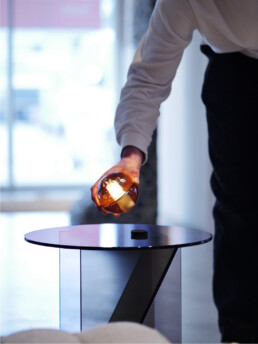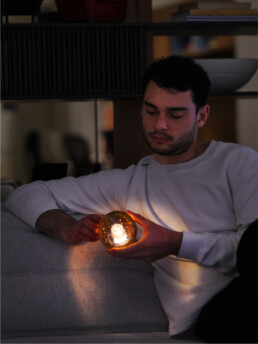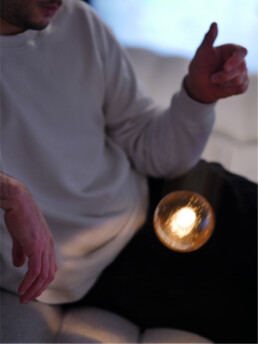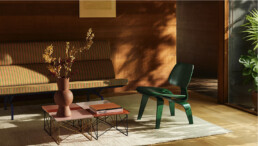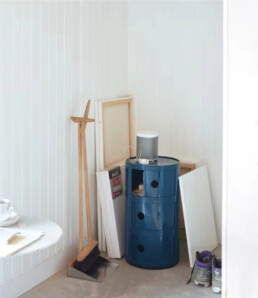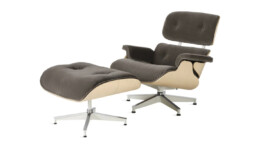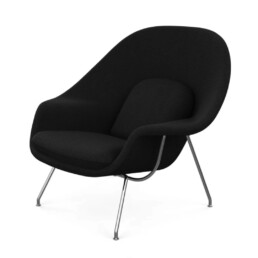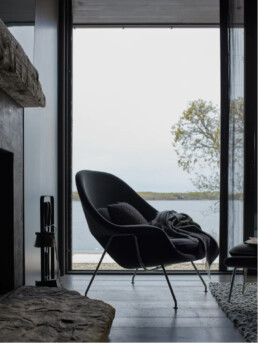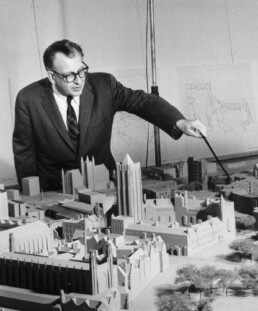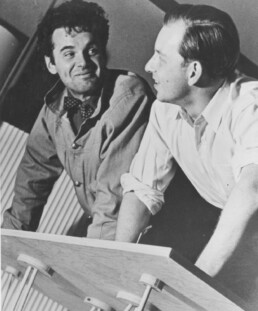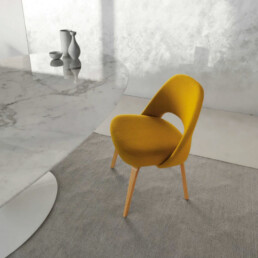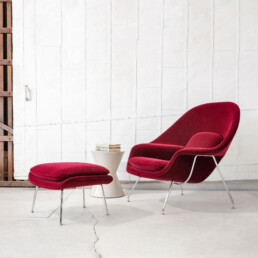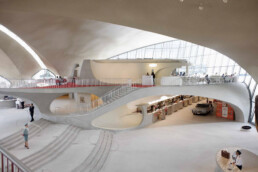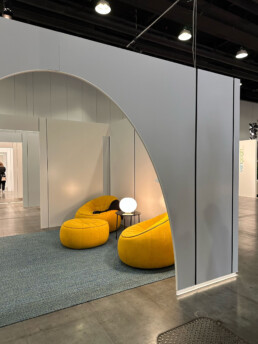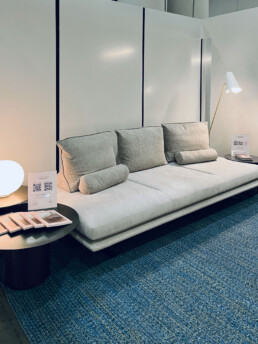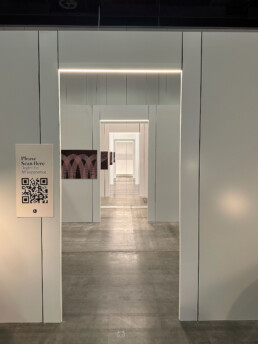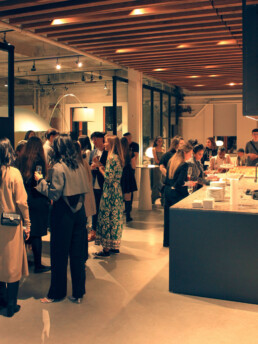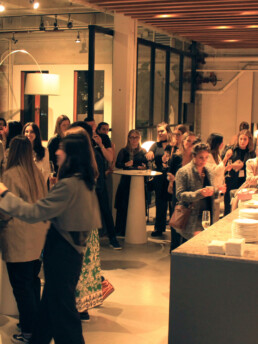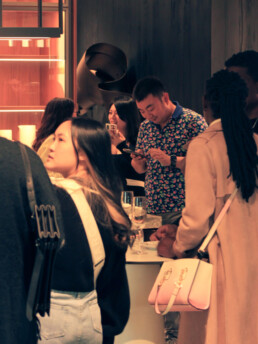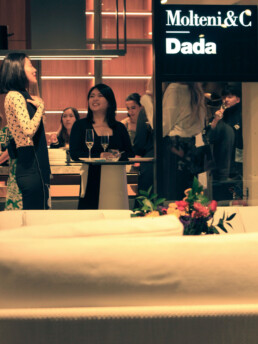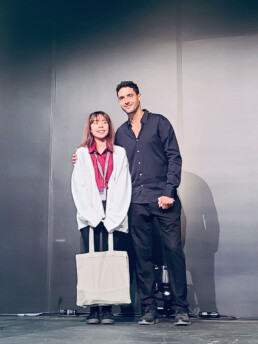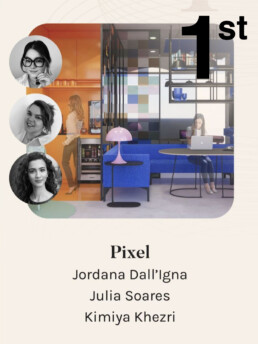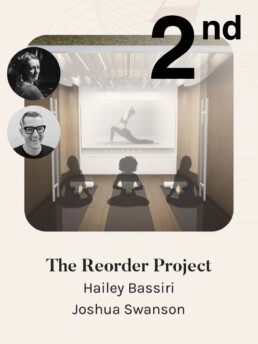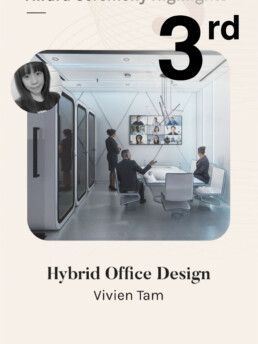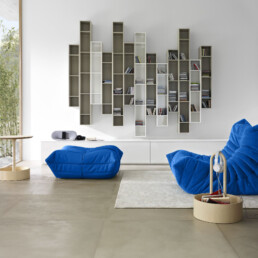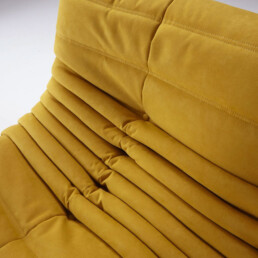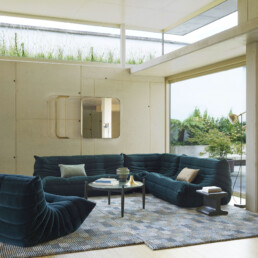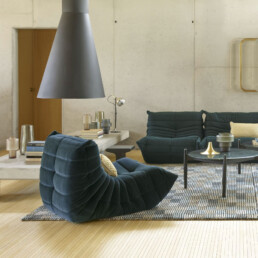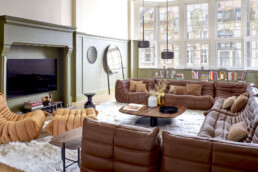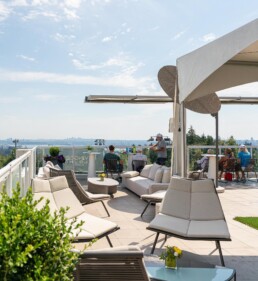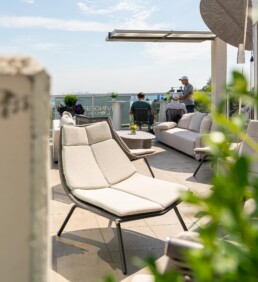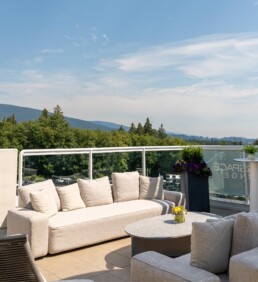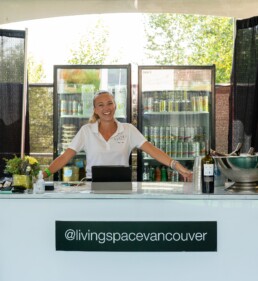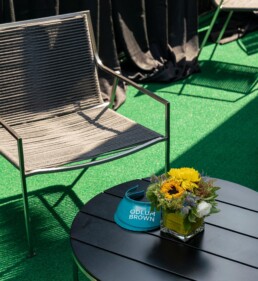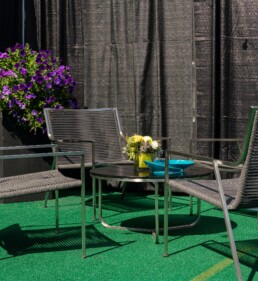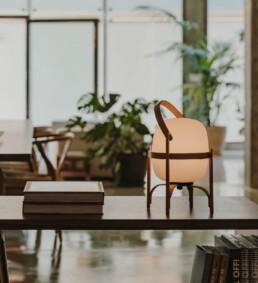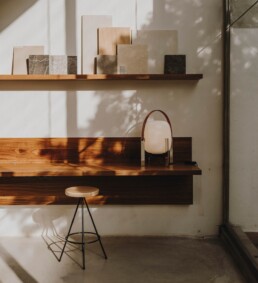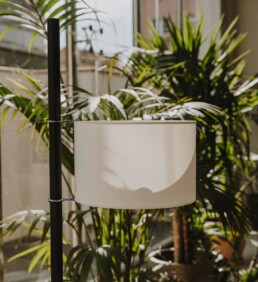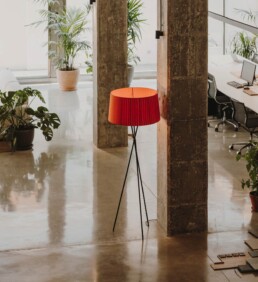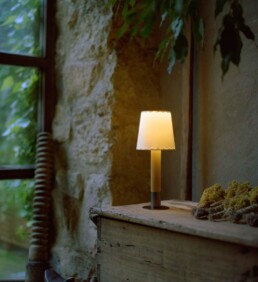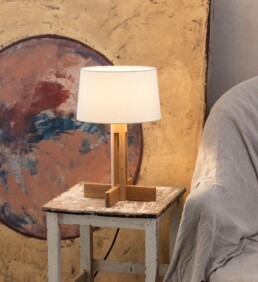Top Picks from A Livingspace In-House Designer: Expert-Approved Favourites
Pieces Built to Last a Lifetime
With trends shifting faster than ever, it can be challenging to find designs that suit your personality and home while also standing the test of time in both style and durability.
We sat down with Matteo Bonetti, one of our in-house Interior Designers at Livingspace and the son of President and Founder Ross Bonetti. Matteo shared his insights on the most timeless modern designs available in-store at the Livingspace showroom or through our online shop. We asked Matteo about his personal favourites and what he recommends for the design-savvy individual looking to make long-term investments in their home’s style.
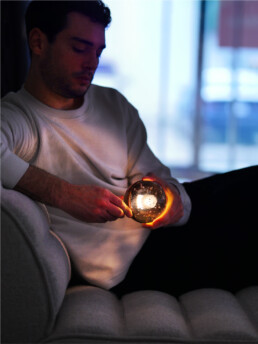
Driven by a passion for modern living, Livingspace has evolved over 30 years from a high-end furniture retailer to Canada’s owned and operated premier destination for luxury home furnishings, now offering a specially curated selection online nationwide.
Proudly founded in Vancouver by Ross Bonetti, Livingspace offers a timeless selection of internationally renowned brands, specializing in furniture, kitchens, closets, bathrooms, and lighting. The in-house team of Interior and Kitchen Designers offers tailored solutions for both residential and commercial projects. By collaborating with esteemed architects and designers on award-winning projects, Livingspace proudly helps set the standard for design excellence in Vancouver, and across Canada.
Matteo, born in Vancouver into the Bonetti furniture family, was raised in an environment surrounded by design-centric thinkers, which ignited his passion for design.
Matteo describes his style as modern, warm, welcoming and sophisticated. “I prefer clean lines and uncluttered spaces that emphasize functionality and timeless design,” says Matteo.
His passion brought him to BCIT where he graduated in Furniture and Space Planning to solidify his skill set. As a young Interior Designer, he honed his skills working alongside his father and Livingspace Design Director Mark Linklater, learning to create spaces that were not only functional but also deeply reflective of an individual’s personality—far beyond fleeting trends and cookie-cutter designs.
9 Curated-Picks
Matteo’s Favourites
The best thing you can do to ensure your space is stylish is to invest in products that will last decades. Usually, the best design not only is beautiful but remains timeless because it was designed in the mind of function. Focus on what the purpose of the piece is. If you invest in a design that is naturally timeless to its nature, then build a space around that, you’ll have a home that outlives trends for decades to come.
“Adding thoughtfully curated pieces is what creates the layers of refinement.” – Matteo Bonetti
Bocci
14P
IN SEPIA
Matteo’s top recommended design is the 14p, released in 2024—a fresh interpretation of the Bocci’s most iconic light, captivating audiences for 19 years.
Bocci’s first iconic release, the 14, was originally designed by Vancouver-native Omer Arbel. Now, the timeless beauty of the 14 is available in a portable, rechargeable version, quickly becoming one of the most sought-after designs of the season.
“True to the Livingspace design ethos, the 14p is unique and sophisticated, crafted to be both functional and beautiful.” – Matteo Bonetti
Learn more about the Bocci 14p in our other blog with further details. Explore Matteo’s favourite portable light in-store at the Livingspace showroom or online now.
Timeless With a Twist
Incorporating Colour
An easy way to add personality to your space is by choosing classic accent pieces with pops of colour. Timeless, neutral furniture provides a strong foundation, while carefully chosen vibrant accents bring energy and warmth to the space. This balance creates a dynamic yet enduring aesthetic while maintaining the enduring appeal of quality, and timeless design.
These are some of Matteo’s online-friendly favourites, in the carousel below.
Herman Miller x HAY
Eames® Molded Plywood
IN GREEN
The iconic 1946 Ray & Charles Eames accent chair was reimagined in 2022 through a collaboration with design collective HAY, adding a vibrant pop of colour to this timeless piece—now a design staple for over 75 years. With enduring craftsmanship at its core, it even comes with a 5-year warranty.
Herman Miller x HAY
Eames® Hang-It-All
IN MINT GREEN
Another collaboration between the Eames duo and HAY, this refreshed Mint Green colorway adds the perfect playful touch to any space, making it an ideal accent for nearly every room in your home.
This furniture fav is even featured in Matteo’s home!

Kartell
Componibili Storage Unit
IN BLUE
This modular element was designed to meet the diverse needs of a home and to fit seamlessly into any space. Kartell’s Componibili was first introduced in 1967 and has since become a timeless furnishing classic.
This furniture fav is even featured in Matteo’s home!
Knoll
1966 Lounge Chair
IN CLASSIC WHITE WITH BLUE
Matteo’s favourite outdoor staple, the Richard Schultz 1966 lounge chair, was designed to withstand even the harshest coastal environments. Featured in his own childhood home, the Bonetti family has enjoyed the timeless beauty of the 1966 collection for decades.
Louis Poulsen
PH 5 Pendant Light
IN MONOCHROME BLUE
Need a conversation starter? Just look up. This classic Louis Poulsen design, available in a variety of colorways, is a great way to introduce colour into your space. However, Monochrome Blue is Matteo’s favourite—after all, you can never go wrong with a primary colour.

Flos
265 Wall Lamp
IN CHROMATICA
The 265 Wall Lamp, designed by Paolo Rizzatto in 1973, features a minimalist silhouette with plenty of personality. Sleek and adjustable, it’s a perfect blend of functionality and flexibility, making it ideal for a variety of spaces.

Building an Ageless Foundation
WITH NEUTRALS
Forever-Loungers
Designing a living room around a single piece of timeless design creates a cohesive, sophisticated space with a strong focal point. This approach will anchor the room and set the tone, while ensuring the space remains functional and stylish.
Styling around a lounge chair is a great option, as it helps anchor the room while offering more flexibility in both size and style. Lounge chairs often feature creative, unique silhouettes that can serve as a statement piece without overwhelming the space.
Discover Matteo’s two top picks, ideal for the design-conscious person looking to make a lasting investment in their living space.
Herman Miller
Eames® Lounge Chair and Ottoman
IN WHITE ASH & LUPINE
With another Herman Miller Eames® pick by Matteo, you can assume nearly all designs from the Eames duo are perfect for styling a timeless home, regardless of your personal style.
This Eames design has been a hallmark of mid-century modern style since 1956. With its timeless appeal, the Eames Lounge Chair complements a wide range of interiors, from modern, to eclectic, to traditional. Renowned for its exceptional craftsmanship and unparalleled comfort, it remains one of the most versatile and respected designs in history.
Matteo’s favourite colour combination is the soft, neutral White Ash paired with Lupine—a striking blend of warmth and understated sophistication.
Knoll
Womb Chair
IN ONYX
The Womb chair goes head to head in comfort and style with the Eames Lounge. In fact Womb designer and American Architect Eero Saarinen and Charles Eames were good friends, often working alongside each other. The Womb’s iconic, sculptural design offers both timeless elegance and exceptional comfort.
Matteo appreciates the depth and sleek sophistication of the Womb Chair in Onyx. The rich, dark shade accentuates its sculptural form while remaining versatile enough to complement a variety of accent pieces.
Where to Begin?
The Right Design For You
Styling a space is effortless when you invest in timeless, modern design—and even easier with guidance from an experienced Interior Designer.
Visit the Livingspace showroom in Vancouver to explore a curated selection of modern designs and speak with one of our in-house designers to bring your dream home to life. Or, shop our collection of timeless classics online, available across Canada.
Eero Saarinen
The man behind the name.
Born on August 20, 1910, Finnish-American architect and industrial designer Eero Saarinen was immersed in the world of design right from the outset. His parents were renowned in their fields – his father the great architect and Art Director at Cranbrook Academy of Art Eliel Saarinen, and his mother the textile artist Loja Saarinen. Immersed in a culture of design under their guidance, it seemed a natural progression when Eero began helping his father design furniture and fixtures at the Cranbrook campus while still in his teens. After a year of studying sculpture in Paris in 1929, Eero enrolled in the architecture program at Yale University.
Eero’s professional career in the United States began with a 2-year stint at the Flint Institute of Research and Planning in Michigan, where he immersed himself in housing and city planning research. In 1938, he left the institute to join his father’s firm, beginning a decorated period of collaboration which saw the duo win numerous competitions for their innovative designs.
It was at Cranbrook that Eero became acquainted with Charles Eames. The two of them quickly became fast friends, kicking off what would become one of the most successful partnerships in the history of design. Perhaps their most notable collaboration was the revolutionary collection of molded plywood chairs for the MoMA-sponsored 1940 Organic Design in Home Furnishings competition, where they won first place in all categories. The success of the collection launched them to the forefront of the modern American furniture movement.
The Knoll connection.
While at Cranbrook, Saarinen also met another young designer who would go on to become a titan in the design world in her own right – Florence Knoll. A promising young protegé of Eero’s father, she spent a great deal of her spare time with the Saarinen family, even joining them on their summer vacations to Finland. It was this familial closeness that led to the sibling-esque dynamic that defined Eero and Florence’s relationship, and fostered a powerful partnership when the two joined forces at Knoll in the 1940s.
During his 15 years with the company, Eero Saarinen created many of Knoll’s most recognizable designs, such as the eminently stylish and timeless Tulip collection of tables and chairs, and the forever iconic Womb chair.
Architectural Projects
A leading 2nd-generation modernist, Saarinen constantly pushed material and aesthetic boundaries beyond the world of furniture. Some of his most famous and enduring works include Dulles International Airport in Washington D.C., the Gateway Arch in St. Louis, Missouri, and the TWA terminal at JFK Airport New York.
LIV Design Studio x Livingspace Interiors at IDS Vancouver 2022
Imagining the future of work.
We hope you had a chance to catch up with Livingspace at IDS Vancouver! It was a pleasure to work alongside LIV Design Studio for their first ever Student Challenge!
In May 2022, LIV Design Studio launched their first ever Student Challenge, tasking local Interior Design students and recent graduates with imagining what the future of work might look like. Entrants had 3 months to design and submit their work for the chance to win a cash prize, a unique internship opportunity, and have their work displayed using AR technology at IDS Vancouver 2022.
At this year’s IDS Vancouver show from September 22-25 (the first since 2019 due to the COVID-19 pandemic), the top four finalists had their future-of-work designs displayed via AR. The popular LIV Design Studio booth featured an entry lounge area furnished by Livingspace Interiors followed by a four-part walk-through AR-experience, enabling IDS attendees to see the future of work through the eyes of Vancouver’s newest generation of designers! After progressing through the tour, audiences were given the chance to vote on their favourite design.
To celebrate the hard work of the newest generation of Interior Designers in our community, we were proud to host a private party for the LIV Design Studio Student Challenge at the Livingspace Interiors showroom in Vancouver! This invite-only industry event provided an opportunity for participants of the LIV Design Studio Student Challenge to mingle and network with design industry leaders, Livingspace executives and the local interior design faculty while enjoying Italian aperitivo, the Livingspace way.
After a long weekend of exploring and celebrating IDS Vancouver, the Student Challenge award ceremony took place at the Convention Centre on the final day of the show. Livingspace was honoured to present the third place prize to winner Vivien Tam for her “Hybrid Office Design” interpreting the ever-growing importance of technology by featuring clean, simple elements to reduce distraction and encourage productivity.
For more information on the LIV Design Student Challenge, please visit liv.ca/student-challenge/.
Ligne Roset's Togo
The story behind the revered design.
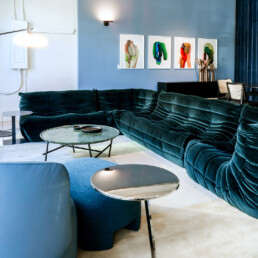
It is said that all good things must come to an end. While this is undeniably the case in most things in life, the enduring style of Ligne Roset’s iconic Togo sofa shows all the signs of an ageless wonder whose best days remain indefinitely in front of it. Although born in an era of shag carpeting, floral furnishings and patterned linoleum in 1973, the Togo has remained effortlessly in vogue throughout the decades while flash-in-the-pan trends have come and gone all around it.
Despite its royal status of present-day, the concept for the Togo came about in rather simple fashion – as great ideas are often wont to do. While standing at his sink one morning in the 1960s, French designer Michel Ducaroy observed how his aluminum toothpaste tube “folded back on itself like a stovepipe and closed at both ends.” A few quick sketches later, his most recognizable design, Togo, was born.
In 1973 the cushy, crimped, ground-hugging sofa series was unveiled at the Salon des Arts Ménagers in Paris. It was immediately met with skepticism. The first of its kind, the hunk of foam wrapped in quilted polyester took people by surprise. The conventional wisdom of the day dictated that sofas had to have a base. “People thought we forgot or didn’t have time to build one,” recalls Antoine Roset, global marketing director and great-great-grandson of Ligne Roset’s founder. Despite these mixed reactions, Togo still won the René-Gabriel prize for high quality at a fair price, and it wasn’t long before the revolutionary design won over its detractors.
Comfortable, groovy and easy to move, Togo has maintained a dedicated fan club of artists, designers and collectors over the decades since its inception. Musician and designer Lenny Kravitz installed a quartet of Togos in his Paris townhouse, and today it has developed a fevered following among design lovers on social media the world over.
Sustainability alongside innovation.
Today’s Togo reflects Ligne Roset’s holistic approach to furniture design alongside the authenticity of its original design. Founded over 160 years ago in 1860, sustainability – from the design process to green manufacturing and employee wellness – is at the forefront of the company’s mandate.
Based in Briord, the French village is home to one of Europe’s most advanced manufacturing complexes. All of their furniture is produced in line with FCBA-certified forest-friendly wood, while sophisticated UV acrylic varnishes are used to minimize air pollution. This ensures all furnishings are completely free of the biocides, heavy metals and halogenated compounds typically found in furniture varnishes.
Furthermore, roughly 56 percent of all factory waste is recycled, including all foam, cartons, leathers, fabrics, wadding, polyethylene and paper. “When one has the good fortune to grow and develop in an environment of such quality, one naturally wants to protect it,” says Pierre Roset, President of Ligne Roset.
But perhaps the most important detail that sets the Togo apart from its contemporaries is the cohort of expert craftspeople who flawlessly execute on each design. Ensuring an attention to detail rarely seen in modern machine-led manufacturing processes, the majority of Ligne Roset’s furnishings are finished by hand. Additionally, new employees are trained in a comprehensive one-year apprenticeship program that ensures the company’s meticulous standards are passed on from generation to generation.
Livingspace at the 2022 Odlum Brown VanOpen
This year’s Odlum Brown VanOpen tournament had its designation promoted to a combined ATP Challenger 125 and WTA 125 event. Audiences were in for a treat with the elevated level of competition on display, which saw Constant Lestienne emerge victorious in the men’s singles championship, while Valentini Grammatikopoulou took home the crown in women’s singles.
A major sponsor of the tournament, the Livingspace Lounge offered a birds-eye view of the action, providing spectators with respite from the blazing sun and an enjoy refreshments from the breezy comforts of the RODA furnishings.
The Tennis Canada court-side lounge featured the stylings of Coro Italia, also provided by Livingspace Interiors.
Centre court featured plenty of riveting performances, including a thrilling tilt between Canada’s Alexis Galarneau and Fernando Verdasco of Spain.
See all the results and news from the event here.
Santa & Cole: Modern Design Without the Lead Time
Seeking to remove a key obstacle to investing in original design.
Let’s face it. One of the biggest obstacles when deciding to invest in authentic modern design is reconciling the desire for originality and superior craftsmanship with the extended lead times that accompany those qualities. There are plenty of good reasons for this, but for those moments when your home is just that one table lamp away from being the finished oasis you envision it to be… well, let’s just say that while patience may be a virtue, home isn’t merely a place – it’s a feeling. So time is of the essence.
Select lighting designs ship in 1-2 weeks.
Santa & Cole, a small, independent outfit based in Barcelona, understand this. They have positioned themselves to address this specific challenge by establishing a proactive warehousing strategy for many of their most popular and iconic lighting models. This enables them to ship new orders within 1-2 weeks from date of purchase to anywhere in the world – a timeline which is unheard of in the world of bespoke furniture and accessories.
Cesta Metalica, Cesta, Cestita Bateria table lamps.
As a company, Santa & Cole have been on a mission to develop light as a medium for creating ambiences and moods which enhance the beauty of objects, shadows and people since their founding in 1985. Entering a bright new era fresh off the heels of a dictatorship, anything seemed possible – a sentiment which imbued founders Nina Masó, Javier Nieto Santa and Gabriel Ordeig Cole with the inspiration to try something different.
In those days, cool-to-the-touch halogen lights which gave off a clinical bluish light were in vogue, bu Santa & Cole opted for an alternative approach. They advocated for the use of natural materials such as wood, stitched cardboard or ribbons – inspiring designs such as the classic Básica lamp – and shifted the mood from cold and technical to warm and human.


